For the most part, living in a city is a beautiful experience, with quick access to shopping and entertainment areas and superior living circumstances. However, there are disadvantages to living in a city—for example, clogged roadways, congested lanes, air pollution, and excessive noise pollution. Let’s check out how to start a terrace garden from scratch in Pune/Maharashtra below.
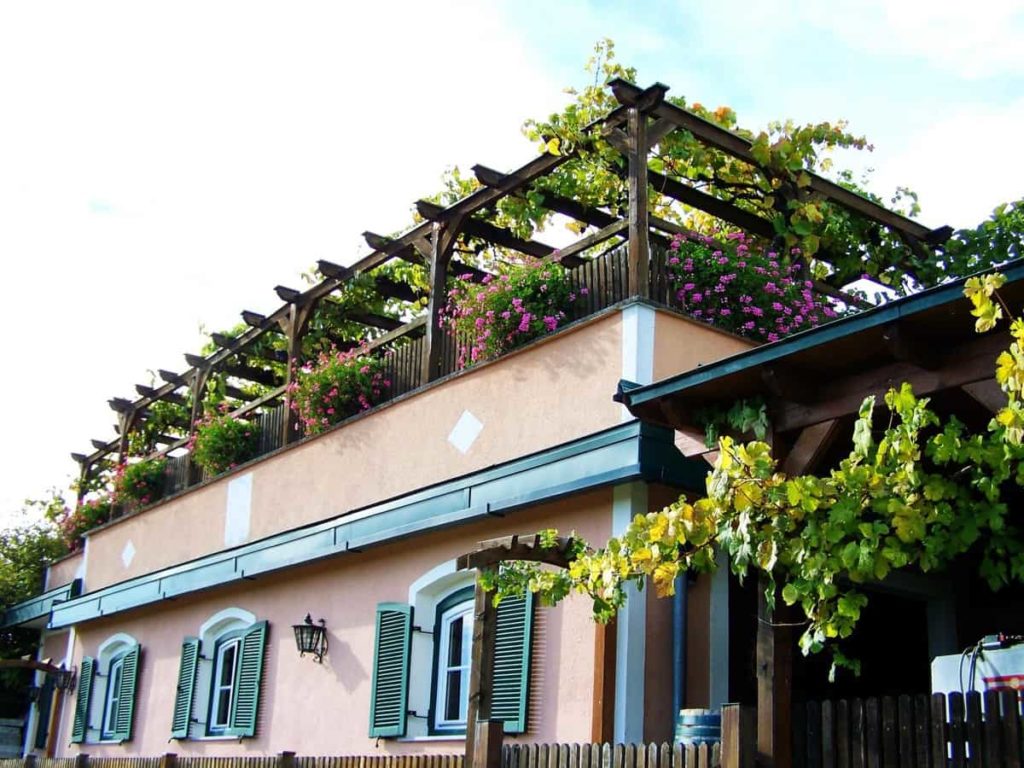
In the modern world, greenery is becoming a rarity. Temperatures in cities are rising, and climate change is becoming more unpredictable. Not only are we inhaling polluted air, but the food we consume is becoming just as polluted. Even when cancer rates grow, we ignore the harm that has been done to future generations by our careless use of pesticides and fertilizers. A terrace garden is a terrific option if you live in a small apartment or home with no backyard. Sunlight is plentiful on terraces.
Growing organic veggies and fruits and establishing a flower garden is simple with these raised beds. Gardening on a terrace can be both relaxing and therapeutic. In the morning, spend half an hour managing your plants, and in the evening, spend the same amount of time. As your tension and worry subside, so will any breathing difficulties you may have had in the past. To reap the benefits of organic and pesticide-free fruits and vegetables, you’ll need to put in a little extra time and effort.
It’s not necessary to grow vegetables to relax in your garden, but you can still enjoy the beauty of flowers and herbs or an exotic green environment with a little spring decked up with lights. Below we will learn how to start terrace gardening in Pune, terrace gardening requirements, terrace garden setup cost, how to maintain a terrace garden in Pune, and how to grow various fruits, vegetables, herbs, and flowers at home Pune terraces.
Advantages of terrace gardening
Building a terrace garden is the easiest way to interact with nature and breathe fresh air. Rising pollution in Indian cities causes widespread concern. Relax on your terrace with a garden and enjoy the peace that comes with it. When you’re not working, you can rest. Terrace gardens are an excellent method to keep your house cool in hot weather. It helps maintain the house’s constant temperature and heat by operating independently. The plants’ ability to absorb heat keeps the home from being too hot.
With terrace gardens, rainwater can be harvested for use in the garden. You’ll be able to store rainwater on your terrace to utilize it later on your garden bed on patio. The pollutants emitted into the atmosphere can be considerably reduced through terrace gardening. Gardening on our terraces can make a big difference. In addition, plants absorb toxic carbon dioxide, filter harmful gases, and remove harmful compounds from the atmosphere.
Adding a garden to a terrace increases the value of a property. It can be transformed into a place where guests can stay or a place where you can relax and be alone. A well-designed and maintained terrace garden can considerably raise the value of a property in some instances.
In case you missed it: How to Start a Terrace Garden From Scratch in Kolkata/West Bengal: For Growing Vegetables, Flowers, Fruits, and Herbs
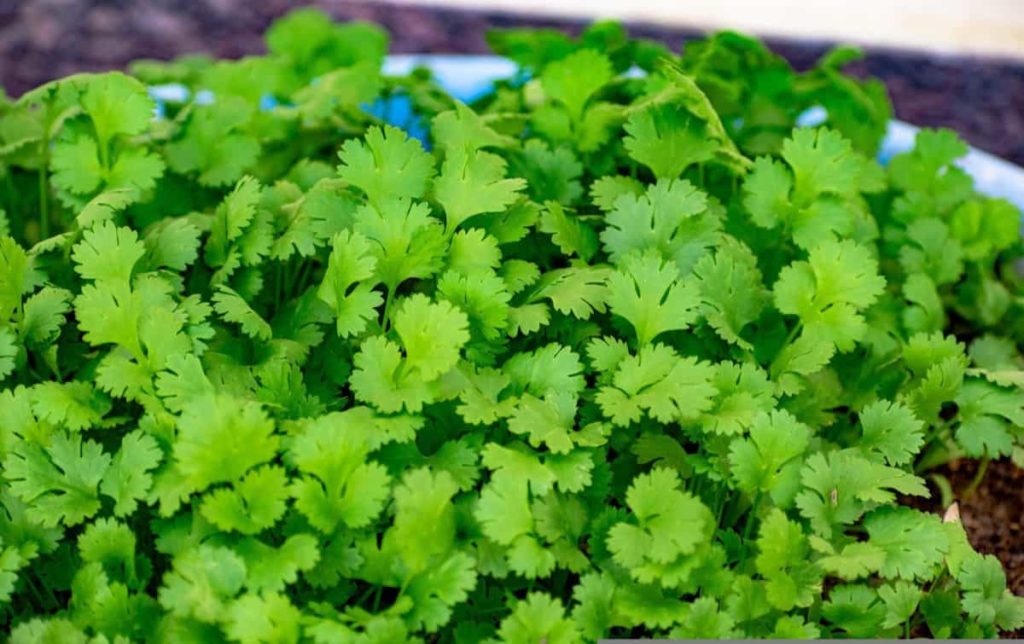
Disadvantages of terrace gardening
Buildings with high water demands can find it difficult to accommodate terrace gardens, which drain available supplies considerably. Because soil is heavy and thick, most roofs must be strengthened before gardens can be seeded on them. When there are strong winds, numerous plants and seedlings can be blown off the roofs. Water will flow into the soil and then onto the rooftop if the layer of a terrace garden is punctured by nails, screws, or gardening equipment.
Since the garden will have to be removed to replace the membrane, this is a costly renovation job. Terrace gardens need drainage systems that are both more complicated and more costly than those required for standard gardens. Water can seep into the building or fall down the walls through microscopic fractures and holes. In most situations, building insurance is more costly than insurance for other types of construction, including terrace gardens.
A building’s structural integrity and weight can be compromised if a terrace garden is included. Planting pots and soil are both heavy, so the structure of your terrace will have to hold more weight if you decide to install a planting bed on top of it. Increased stress on the terrace results from terrace slabs and furniture being placed there. On the other hand, a typical garden can be drained quickly without needing an expensive drainage system. It is necessary to have a drainage system installed to stop water from leaking into the structure of the garden.
A step-by-step guide on how to start a terrace garden from scratch in Pune/Maharashtra
Plan your terrace garden
You must create a rough blueprint for your terrace garden to get the most out of your gardening abilities. Your terrace garden should plan how you intend to nurture your greens. Don’t be concerned about how they appear in pots, raised beds, or even the vertical space on your terrace; they will all look great. Get fresh air and sunlight daily by setting up a sitting area in the middle of your yard. Raised beds, vertical planters, trellises, and containers can all help you make the most of the area you have to work with.
Estimate your terrace gardening budget
Be aware of your financial situation. You can start small and add additional plants, containers, and soil as your budget allows. There is a lot of money to be spent on hardscaping and terrace construction. The expense of constructing raised beds and boxes, laying tile or stone, and adding lighting and furniture can all rise over time. Their support also could require improvement.
Gather your tools
For any kind of gardening, no matter how little or large the space, it is essential that you have the proper equipment. Among the tools you’ll need are watering cans and a hose, gloves, rakes, shovels, containers, and trowels.
Prepare the roof for the terrace garden
Waterproofing your terrace: To prevent any damage to the home, you should begin by water-proofing the roof and fixing it, so it is water-resistant and does not leak. The process of waterproofing is simple, and there is a wide selection of water-proofing materials available to purchase.
In case you missed it: How to Start a Terrace Garden From Scratch in Chennai/Tamil Nadu: For Growing Vegetables, Flowers, Fruits, and Herbs
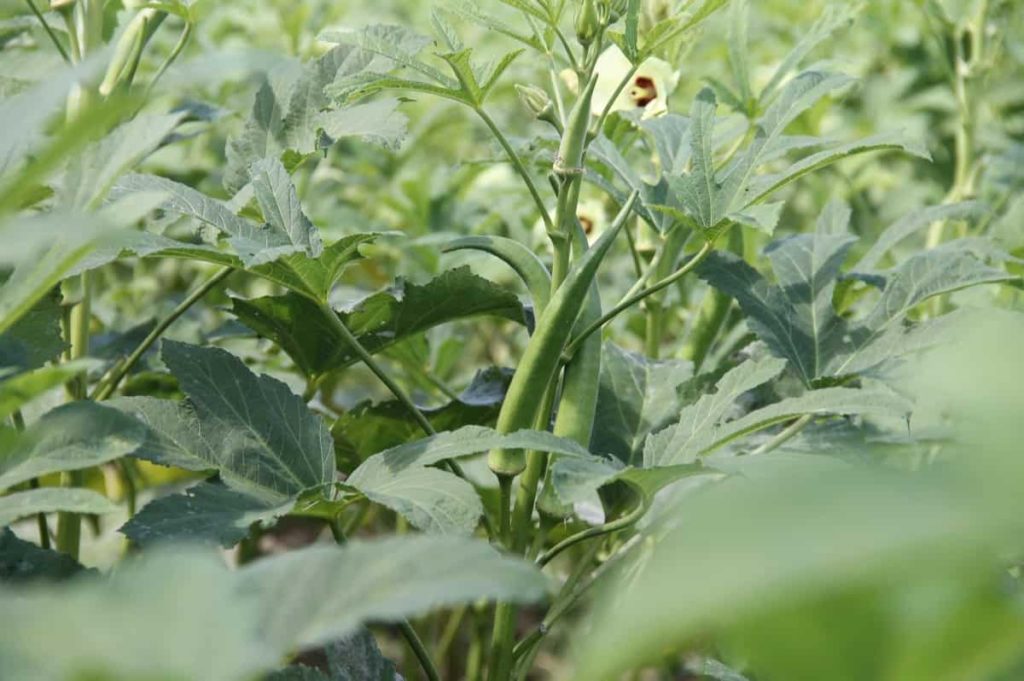
Insulation layer: Water and temperature fluctuations are kept at bay, and the required mechanical strength is provided by the insulating layer of a terrace garden. The main components are polyurethane foam, extruded polystyrene boards, and PIR panels. PIR panels are an excellent option for insulating layers on the terrace garden because of the specialized grooves and machined edge connections.
Install a drainage system: Removing the water that has been saturated as rapidly as possible is the goal of installing a drainage system. The surplus water that collects on the plant layer and the rooftop should be immediately removed by an effective drainage system and sent into the drainage system. Polystyrene modules, lightweight plastic sheets, and porous mats are some of the most common types of drainage material used in the gardening industry.
Geotextile layer: A layer of geotextile fabric separates the drainage layer from the soil-growing plants. It keeps drains clear of dust and other clog-causing materials. Plant water loss is slowed by moisture circulation. For geotextiles to be effective, they must be waterproof, permeable, biodegradable, and resilient.
Vegetation layer (if you want to grow directly on the terrace ground): The “vegetation layer” is the same thing as the “growth medium” when talking about plants and other types of greenery. Air and water permeability are critical in the growth medium. Soil preparation and plant selection are intertwined. Acidic soil can be created by combining various organic elements like garden soil, farm manure, or compost with other substances. The thickness of your growing medium should be determined by the kind of plants you want to grow there.
Select your plants for your terrace garden
This process step is one of the most exciting aspects of creating a terrace garden. Due to their reduced weight, fiber-rooted plants are more popular than deep-rooted ones. Consider the amount of shade your terrace provides before selecting plants. For the weaker plants, the shaded areas are reserved for those able to withstand less direct sunlight. In contrast, plants that need a lot of sunlight should be placed where there is no shade. Seeds for the most critical plants can be ordered online or through local nurseries in Pune.
Choose the right containers or raised beds for your terrace garden
Terrace gardening necessitates using pots, jars, buckets, and other plant containers. Depending on your needs, you can use cement containers or clay pots. You can buy raised beds for your rooftop garden as an alternative to the usual garden beds. Raised beds provide a significant advantage over pots in terms of space. Vegetables thrive under these conditions. For vertical gardening, you can use trellises to hold your vining plants. You can decorate your terrace in several ways, including hanging little flowering plants.
Prepare the soil for your terrace garden
The plants that thrive in good soil are healthy, too! Soil that has been properly nourished and conditioned is essential to the growth of healthy plants. To make your potting soil, blend organic compost with the soil. The soil in your terrace garden should be neither too compressed nor too light—like well-drained, wet soil. Compost your garden soil regularly using organic matter. As rain falls, the nutrients in the soil of your terrace garden can be washed away. This needs regular fertilization to produce healthy crops.
Chemical fertilizers can seep into your system and harm the beneficial bacteria and microorganisms already in the soil, so avoid using them at all costs. Add equal parts coco peat, organic compost, and red sand to build your potting mix in a big mixing container. A week or two before planting, give your potting mix an excellent toss to let it settle. Make certain that the consistency of your potting soil is consistent. To keep your soil healthy, you may keep up with frequent fertilization. You’ll have nutritious greens from this.
Plant your terrace garden
Once you have prepared your seeds, containers, potting soil, and fertilizer, you can start planting your garden. If you are using a sowing tray, plant the seed so that it is buried roughly one inch deep in the potting soil, and then give it a gentle misting of water. When a plant has five or six leaves coming out from it, or around three to four inches tall, it may be transplanted into a container—while being transplanted, exposing the plant roots to direct sunlight might cause them to get injured dry up.
In case you missed it: Best Season to Grow Cucumber at Home in India: In Pots, Terrace, Apartment Balcony, and Backyards
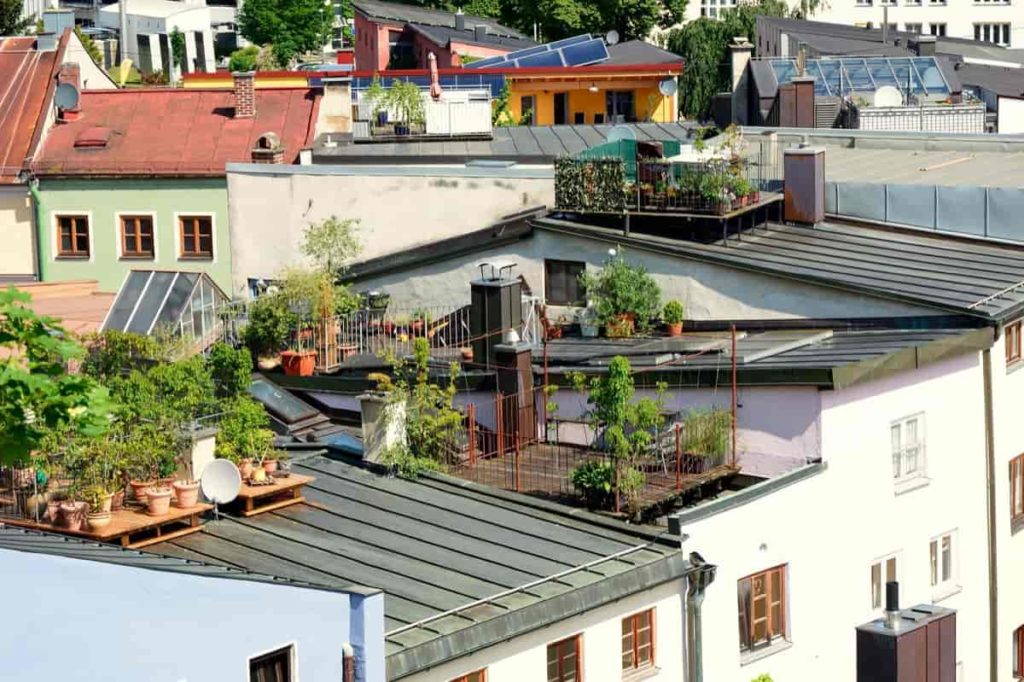
Suppose it is your first journey into the world of home gardening. In such a situation, start small and progressively expand until you’ve resolved all concerns and built a reliable approach. Those interested in growing their vegetables could begin by growing a single crop, such as tomatoes, which are easy to plant and need minimal maintenance.
It is essential to keep in mind that the growth of your plants will not begin immediately, and if you want them to be successful, you will need to be patient. Keeping this in mind is of utmost importance while dealing with this circumstance. A well-kept garden will repay the effort and time you invest in it, just as any other venture worthy of your time and attention will do.
Go vertical
Because of the limited space available on a terrace, especially in cities like Pune, it is a great idea to promote vertical planting. Because of this, a person who enjoys terrace gardens must ensure that his garden contains more plants than trails or climbs. In addition to climbing up and over the boundary wall, some of them are also capable of scaling a supporting pillar or a decorative arch.
You may also give your patio a jolt of color by growing ornamental climbers in pots or hanging baskets. Utilizing hanging plant pots constructed of lightweight materials is one of the strategies shown to be the most successful for terrace gardening. These planters are very important to the overall design of the terrace garden.
Water your terrace garden
Even water is critical for most plants. However, the plant’s roots will grow stronger if the soil is allowed to dry up before watering. During the day, more water evaporates from the soil than in the evening or at night when the earth is cooler. As a bonus, the plants will have time to collect enough water before the following day’s heat sets in to avoid dehydration. A moist leaf makes it more vulnerable to disease.
Tiny burn scars form when leaves are wet and exposed to the sun. Diseases like leaf mold can develop if the leaves are left wet overnight. Soil and root penetration are necessary to provide optimum hydration of plants. The soil’s surface is often moist due to a lack of water. Plants are highly dependent on soil moisture to maintain a constant moisture level until their yield is ready for harvest because of the necessity for proper hydration.
When it comes to water absorption, patience is a virtue. So that vital moisture does not evaporate unutilized, it is advisable to water the bed in parts rather than all at once. Soil nutrient absorption is reduced if water is repeatedly applied to the same root spot. As a result, you must constantly water the surrounding area and distribute the water evenly.
To save water, employ drip watering systems and other approaches. Root cells die due to waterlogging, which stops the roots from obtaining oxygen from the surrounding soil. Due to its more excellent expansion capabilities, plant soil rich in clay minerals is better able to disperse water throughout the soil. During the rainy seasons (summer and winter), ensure enough water drainage to prevent flooding.
Pest and disease management for your terrace garden
Managing healthy soil is the first step in effective pest and disease control. Neem cake, which is both nutritious and protects the soil from harmful organisms, should be included in the potting mix. By properly and completely preparing the potting mixture, you can keep harmful organisms like pests and diseases at bay. Consistently growing the same crop is a sure way to attract pests and infections to your garden.
First, identify the vegetables you wish to grow and when. Taking care of the tools you use in the garden is essential to maintaining a clean growing area or container. Practicing proper hygiene can eliminate the risk of unintentionally passing on infectious diseases or a pest. Some plants, such as the chrysanthemum and the marigold, exert an effect on their surrounding environment that is naturally repellent to insects and pathogens.
Planting a row of flowers is a win-win scenario since they both have an attractive appearance and a natural resistance to pests. On the other hand, we call it the border crop because it is attractive to pests, which is certainly the case. Traps can capture a wide variety of insects, including many different kinds of bugs. Sawdust from hardwoods, bran, sufficient amounts of molasses, and water should be combined in equal quantities to form a sticky paste.
In case you missed it: The Best Fertilizer for Tomatoes in Pots
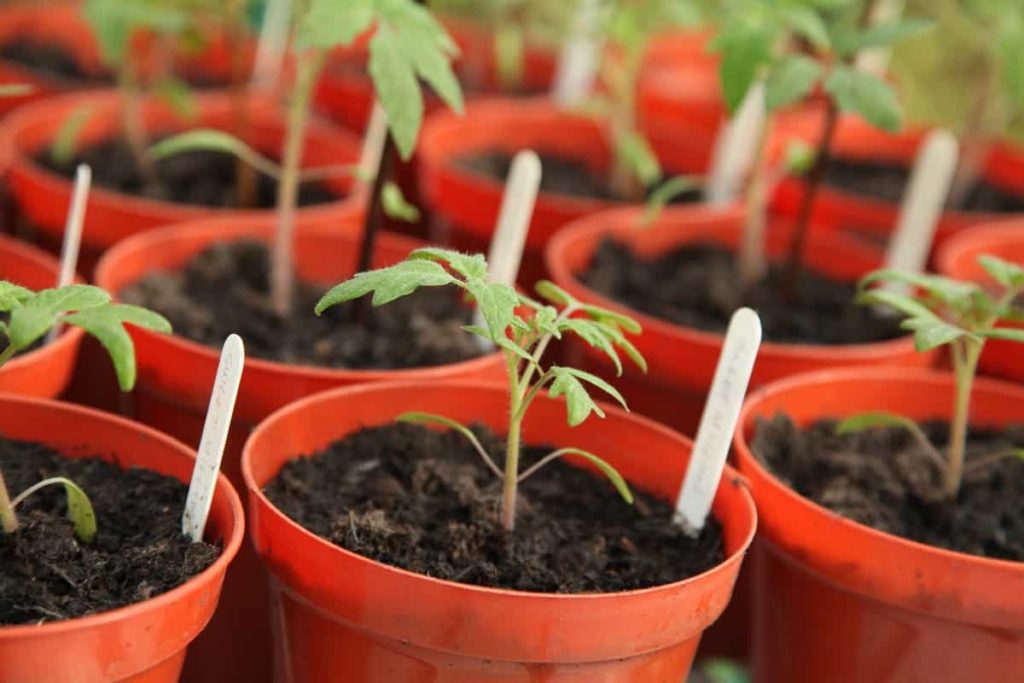
The application of fertilizer should ideally take place in the evening. Molasses entices cutworms, trapped in the sticky substance as they try to pass through it. It is no longer possible to kill the insect with the chemical once exposed to the sun and allowed to dry up. If cutworms consume this bait, they will perish; nevertheless, a variety of traps can be placed for them.
Mulch your terrace garden
Using mulch is a fantastic way to keep your plants healthy and ensure they get the water they need. In addition to keeping pests at bay, mulch will help the soil retain its moisture for longer periods. You can use hay, chopped wood, and fruit peels for mulch.
Wind protection for your terrace garden
Think about how much stronger the wind will be in a terraced garden than in a typical garden when planning your landscape. The general design of your terrace garden will need the use of windbreaks. Trellises or other meshed windbreaks can be a good option for terrace gardens. Instead of completely blocking the wind, windbreaks should concentrate on limiting its passage. Through high gusts, solid windbreaks are more vulnerable than ones that let some air in. It’s also essential to keep the wind flowing, but you want to lower it.
Heat protection for your terrace garden
Additionally, heat is radiated from the roof, nearby buildings, streetcars, metal exhaust systems, and utility structures, and the sun’s rays hit the roof’s surface. Green netting or polythene nets are a must, even if you don’t wish to protect your plants from the sun.
U.V rays and bird protection for your terrace garden
Insects and animals aren’t the only dangers to your plant. Birds and UV radiation might be a concern as soon as the plant produces veggies. Garden nets and wire mesh can guard your plants against pests and disease.
Maintain storage for your tools and equipment
When it comes to gardening, you’ll need a large number of supporting equipment, including tools, fertilizer, compost, and buckets, among other things. Because rooftops often have a restricted area, it might be challenging to hide a storage spot there. Shelves are the only necessary thing. Some individuals who produce their food on terraces choose to grow their plants in little closets. Another solution that satisfies the criteria for serving multiple purposes is bench seating with built-in storage space.
Best vegetables for Pune terraces
carrots, cucumbers, bottle gourd, Tomatoes, zucchini, okra, potatoes, radish, bitter gourd, spinach, eggplants, and other vegetables can be grown on the terraces of Pune.
In case you missed it: 18 Common Rose Plant Problems: How to Fix Them, Solutions, and Treatment
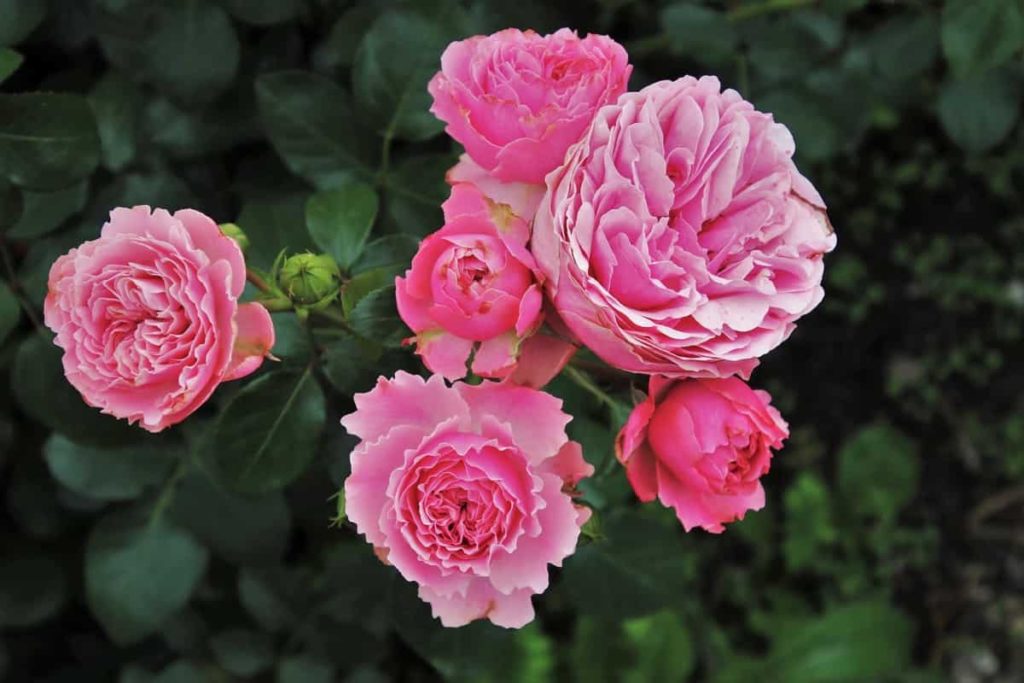
Best fruits for Pune terraces
Jackfruit, pomegranate, Pineapples, lemons, papayas, gooseberries, and other fruits can be grown on the terraces of Pune.
Best flowers for Pune terraces
Jasmines, gerbera, aster, Marigolds, rose, chrysanthemums, tuberose, and other flowers can be grown easily in the backyards of Pune.
Best herbs for Pune terraces
Basil, parsley, oregano, coriander, mint, and other herbs can be grown easily on the terraces of Pune.
Conclusion
Terrace gardens are a simple and effective method of addressing various problems common in our urban lifestyles. You should think about growing a terrace garden if you want to lead a life that is both healthy and free of stress. You’ll be shocked to discover how much happiness and relaxation it can bring into your life.
- Broccoli Seed Germination and Selection
- Asparagus Seed Germination and Variety Selection
- Seasonal Flower Gardening: Best Practices for Spring, Summer, Fall, and Winter
- How to Grow Hibiscus from Flower
- Plantation Ideas for Home Decoration: A Beginners Guide
- Flower Garden Designs and Layouts for Beginners
- Planting and Spacing Techniques in Papaya: A Beginner’s Guide
- Growing Gold: Essential Techniques for Planting Pineapples
- How to Make Kalanchoe Plant Bushy: Home Remedies and Solutions
- 11 Reasons Why Your Gardenia is Not Blooming: Home Remedies and Solutions
- Eco Elegance: The Guide to Designing a Drought-Tolerant Landscape
- Gardening on a Slope: Strategies for Hillside Landscaping
- Nourish and Flourish: Top Organic Mulches for Thriving House Plants
- Everything You Want to Know about Indian Mogra Flower: Discover Uses and Growing
- Green Thumb Success: Expert Tips for Cultivating Greenhouse Pumpkins All Year Round
- Maximize Growth & Flavor: The Ultimate Guide to Companion Planting in Herb Gardens
- How to Control Rhododendron Problems Naturally: Home Remedies and Organic Ways to Fix Them
- Natural Magic: The Remarkable Benefits of Cinnamon for Plants
- Best Steps to Revive Dying Tulip with Natural and Organic Treatment
- 10 Reasons Why Your Angel Trumpet is Not Blooming: Remedies and Treatment
- How to Fix Periwinkle Leaf and Flower-Related Problems: Natural Remedies and Solutions
- How to Fix Zinnias Leaf and Flower Problems: Discover Natural and Home Remedies
- Organic Steps to Induce Lemon Tree Flowers: A Comprehensive Guide
- Bloom Booster: Crafting the Perfect Homemade Bougainvillea Fertilizer
- Optimizing Growth: A Guide to Applying NPK Fertilizer for Potted Plants
- 10 Best Homemade Fertilizers for Rubber Plant: DIY Recipes and Application Method
- How to Boost Female Pumpkin Flowers: Effective Steps for More Flowers and High Yields
- Transform Your Indoor Garden: Top Benefits of Pink Salt for Houseplants
- 10 Best Homemade Fertilizers for Peacock Plants (Calathea): Easy DIY Guide
- Unlock Blooms: 9 Reasons Why Your Potted Chrysanthemum is Not Blooming
- 8 Reasons Why Your Potted Hibiscus is Not Blooming: Fix it with Simple Solutions
- Unlock Blooms: 9 Key Reasons Your Potted Frangipani Won’t Flower
- 10 Reasons Why Is My Ice Plant Not Blooming: Remedies and Treatment
- 10 Reasons Why My Potted Hydrangea Not Blooming: Treatment and Remedies
- 10 Reasons Why is My Wisteria Not Blooming: Remedies and Treatment
- 10 Reasons Why is My Goldfish Plant Not Blooming: Remedies and Treatment